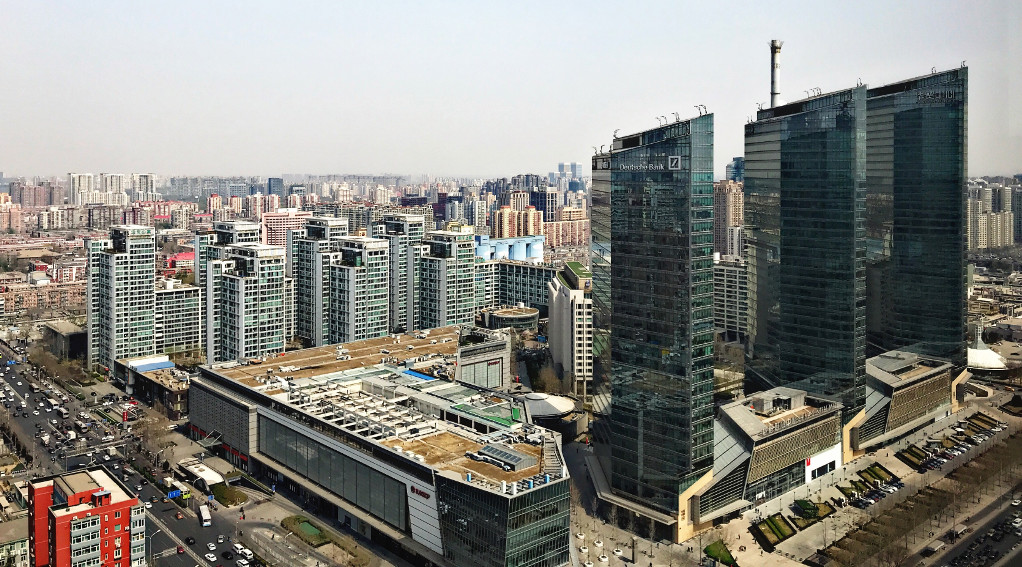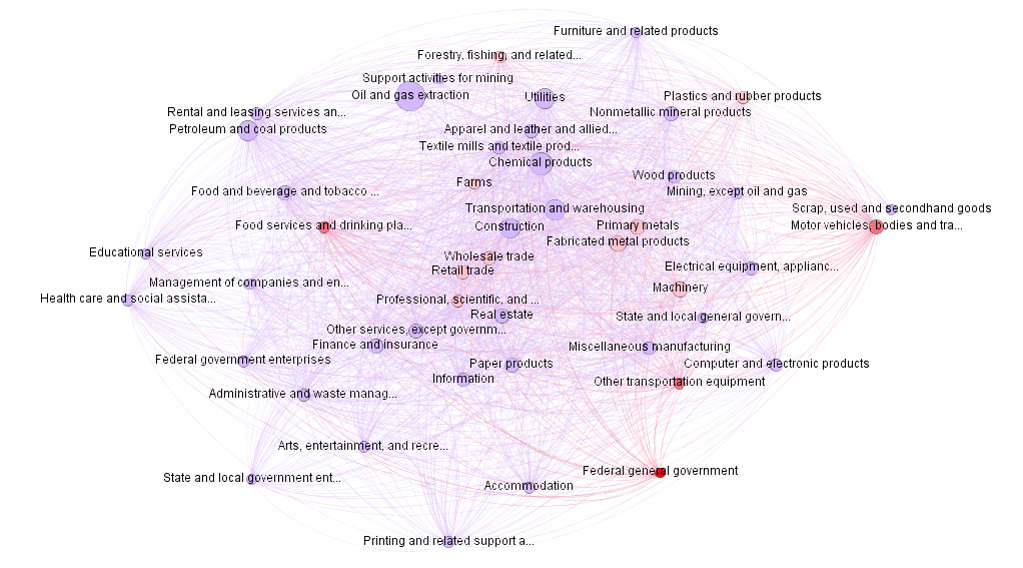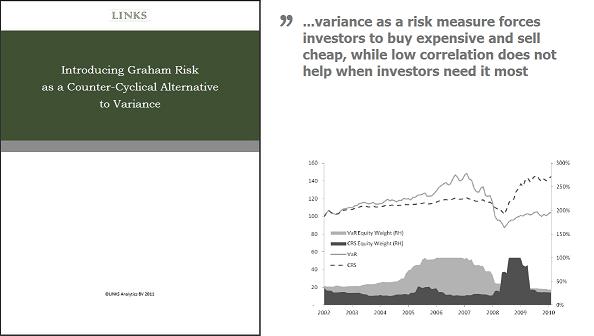Past the Inflationary Apex: Generational Inequality and Deflation on the Horizon
The current shortage of labour in the service sector is likely to be short-lived. The accelerating pace of automation in the next five years is likely to trigger increasing generational inequality. Underemployment and lagging income levels of younger employees will have a strong deflationary impact of up to 3% annually in Europe, causing negative yields, [...]
Macroeconomic theories do not determine prices. Companies and individuals do. We examine several theories supporting a regime change towards a higher inflation environment in the long-term and find all of them lacking evidence from the ground. We then propose firm-level reasons for persistent inflation and highlight indicators that could point at the direction of prices [...]
We introduce new energy transition scenarios focusing on the distribution of the financial burden. The results suggest that even if different scenarios have the same target temperature limit, the outcomes for financial asset returns and interest rates can be very different, depending on the distribution of the costs of the energy transition. In 2019 [...]
We have carried out a systematic review of global risk sources using our five-step structured risk assessment approach. Part one and two of the review published earlier covered the inflationary risk concerns and the risk of accumulating government debt. In this part three of the review, we focus on the risk of global trade war. [...]
We have carried out a systematic review of global risk sources using our five-step structured risk assessment approach. Part one of the review issued earlier covered the inflationary risk concerns. In this part two of the review, we focus on the risk of global government debt crises. Investors concerned about the sustainability of [...]
We have carried out a systematic review of global risk sources using our five-step structured risk assessment approach. Although global inflationary concerns are often quoted as the most pressing risk source, our assessment suggests otherwise. A more significant potential damage to pension fund balance sheets can be expected from a possible global trade war and [...]
The changing environment for growth option pricing in the last decade, namely, higher economic uncertainty and lower cost of innovation, has caused the underperformance of factor portfolios. Factor portfolios promised to deliver stable and easy-to-predict excess return at no additional risk and relatively low cost – an attractive promise for institutions that are starved for [...]
Institutional investors increasingly notice that the results of an ALM study become irrelevant almost immediately or shortly after the ALM exercise. Why is that? Traditional statistical models use historical relationships to create future scenarios. If there are no comparable historical precedents (think of Brexit, Covid-19, demographic developments, blockchain, etc.), a future scenario based on an [...]
Despite years of investment in the development of the function, investment risk management at pension funds and insurance companies still fails to deliver on the promise. Several fundamental issues are to blame and there is a fix, but it requires different set of skills. For several years now regulators have paid disproportionate attention to risk [...]
The economic and geo-political seismic shifts over the past forty years imply a future that is drastically different from the past. In such an environment, the current market capitalisation, which reflects the historical reality, may not be relied on for building global equity mandates into the next decade. Institutions could benefit from building return expectations [...]
Nassim Taleb, and Benoit Mandelbrot before him, referred to “black swans” as extremely rare, significant events with non-calculable probabilities. Covid-19 is not such an event and its consequences are quite predictable. Among other things, Covid-19 may have accelerated the dominant trends in the economy, with significant impact on long-term expected returns of equities and bonds. [...]
We consider two likely exit scenarios of Covid-19 pandemic and the world economy, but without a need to select one. A blueprint with early data signals will guide institutional investors and help them decide when (and IF) to switch from the “bad” scenario to preparing the portfolio for the “really bad” scenario. The spread of [...]
Earlier China nCoV Scenario On February 6, 2020, urged by our clients, we introduced a stress scenario in Mira ABM called China-2019 nCoV to reflect the quickly spreading epidemic of a yet unnamed disease in China. At the time our concerns were: China will in lock-down for up to three months, with the economy working […]
Despite the immense importance of the foreign exchange exposure for global investors, the generally accepted approach to currency hedging at euro-based pension funds is too generic, sometimes - counterproductive and often driven by inaccurate assumptions. Pension funds in the Netherlands and elsewhere in Europe implement a foreign currency (FX) hedging policy with an aim of [...]
LINKS have introduced two new BREXIT scenarios in Mira ABM. There are many geo-political consequences of BREXIT, including the eventual Irish border and the status of the UK post-exit, but the impact of BREXIT on institutional portfolios depends on more mundane trade arrangements. To begin with, any UK exit that is accompanied by an amicable […]
In recent years there have been increasing concerns over corporate debt build-up in the US and Europe. Debt levels are considered high IF they cannot be sustained – in our assessment, a difficult claim to make for US and European companies. The marked increase in the stock (volume) of corporate debt both in developed […]
We have integrated the available industry-level climate change transition research from multiple sources and included climate change transition as the fourth long-lasting trend in Mira ABM*, along with automation, ageing population and globalisation/trade conflicts. The transition of our economy in response to the climate change has begun in the earnest and is likely to […]
Mira ABM Risk Severity
The recent fall in the industrial production in Germany appears to be larger than typical quarterly volatility. Year-on-year change was -4.8% in November 2018 – the greatest decline since 2009 (source: Bloomberg). Source: Bloomberg A more detailed analysis of the business sentiment – IFO index (source: IFO Institute, Center for Economic Studies) suggests that while […]
In the six years since LINKS first covered risks of excessive leverage in the Chinese economy, both understanding of and dealing with leverage has been a key focus for the government of China. Despite this focus and even though the debt is domestically funded, the results of deleveraging are less than encouraging. Sustainability of this […]
Much has been discussed about the technology sector concentration of S&P 500. Although we find that the degree of concentration is not unusual, once certain myths about the largest companies are dispelled, the nature of exposure and corresponding end-market risks indicate a degree of fragility. The concentration of the US stock market performance in the […]
Some sources of inflationary risk are more benign than others. Given the structural headwinds that the global economy faces, a broad inflation hedging programme can be expensive and unnecessary. On the other hand, the likelihood of unexpected inflation driven by regulation or supply shocks is increasing. This points to a more targeted approach when managing […]
On February 2, 2018 the US administration announced a new set of tariffs to be applied on imports of steel and aluminium. The tariffs of 25% and 10% respectively will disproportionately affect US' closest ally and trading partner - Canada. The other countries have relatively manageable exposure to the US imports (see the table below). [...]
The emerging disruptive forces of technological, political and demographic change threaten to destabilise long-term investment performance. It will take special kind of capacity building and flexibility for institutional investors to benefit from disruption rather than fall prey of it. We live in an age of unprecedented confluence of multiple disruptions. First, there is a generation [...]
What Could Possibly Go Wrong? It is not easy to build plausible yet severe economic scenarios. Doubly so, if those scenarios are assessed in LINKS Mira Agent Based Model (ABM). Unlike conventional models, Mira ABM takes into account unintended consequences of events – both positive and negative. Just like in real life, positive and negative [...]
Of all the global risk sources at the tail end of 2017, a sudden oil price shock arguably poses the greatest risk to institutional portfolios both in terms of its likelihood and the severity of impact. But perhaps the most troublesome factor is the complacency or lack of attention towards this risk; if anything, investors’ [...]
Institutional investors often assume a degree of “return-to-normality” for long-term rates in their investment plans. But what are, if any, the preconditions for return to higher interest rates? And if those preconditions are not met, what could be the expectation range that takes into account the structural drivers of interest rates? The fortunes of pension [...]
The global reflation trade has been in the centre of investor attention lately. One-off factors such as Brexit, commodity price increases due to government policy in China and oil price that rebounded from low levels, could explain much of this reflation. We audit the “trail” of reflation sources and identify a key vulnerability in the [...]
Is media coverage of potential sources of economic disasters proportionate to their likely impact on the economy and institutional portfolios? Investors form their perception of the magnitude of risk based on large number of public sources. Political biases, different estimation approaches and assumptions may result in unfair attention to things that do not matter and [...]
Why is The Scenario Risky? The second largest economy in the world, with reported debt-to-GDP rate of 240% to 280% and a far greater ratio, if shadow banking is taken into account (source: Bloomberg, World Bank), must be a source for concern. More worryingly, the pace of debt build-up is among the fastest in the [...]
We extend LINKS Mira to the analysis at a portfolio and asset class levels. Mira enables us to value asset classes and carry out scenario analyses, such as the “Trump-effect”, presented in this issue. To establish credibility of the approach LINKS have consistently taken over the years, we also review the results of our documented [...]
Rising complexity in the world and structural breaks across markets require new non-stochastic approaches to scenario generation. The world is also too complex for simplistic ad-hoc assessment. We demonstrate the insights gained by implementing a supply chain agent-based model (LINKS Mira) and run the “China hard landing” scenario with curious conclusions. As the world goes [...]
Join us at our inaugural meetup dedicated to creating impact with risk management. We misunderstand probability, we’re myopic, we pay attention to the wrong things, and we are just generally very bad at probabilities. The triumph of “heuristics and biases” research pioneered by Daniel Kahneman and Amos Tversky poses a question: how do we stay [...]
It is confirmed: marine transport will have to shift to low sulfur fuels. The environmental mandate creates multi-billion opportunities and risks. The largest impact equivalent to nearly doubling revenues for a number of companies is far down the supply chain. The fuel standard used for the bulk of marine shipping is set to change [...]
Contradictory macro- and microeconomic observations in today’s economy are a norm, and the recent earnings season in the U.S. only adds to the uncertainty. Unfortunately, wishful thinking is not a way out this time either: putting the pieces of puzzle together reveals the state of economy that is not new. One of the biggest challenges [...]
In the heaps of Producer Price Data issued by BLS, there was one curious item in September – an unusual price shift. Corroborated by the industry sources, the shift can become a catalyst for many changes beyond petrochemicals. Most of the supply chain will suffer, but there are few companies that might benefit. Looking for [...]
Earnings season provides incredible insights into global supply chains. Monsanto’s earnings release was by far the most insightful last week in terms of implications for many companies. In many ways, there is no need to forecast – the reliability of conclusions (and trades) is a necessary outcome of what Monsanto disclosed. The earnings season has [...]
The most tangible impact of Brexit so far has been the falling sterling. Near 15% decline of the currency since the vote should in theory create problems for many US competitors. Due to the peculiar nature of the British economy, the outcome is a little more unexpected. A few months ago, when I was asked [...]
Two very significant events in the week will have implications beyond their immediate markets. OPEC’s agreement to cut production, although ineffective in itself, is a trigger for something more significant. Deutsche Bank was magically saved by accommodating stance of DoJ, yet the episode highlights the vulnerabilities and the mechanism of a global financial distress. Events [...]
As the recent Deutsche Bank episode illustrates, counterparty risk management for pension funds and insurance companies should be based on more proactive and comprehensive assessment of all risks relating to the counterparty. Many Boards and investment committees, undoubtedly, have revisited their exposure to Deutsche Bank at some point during the episode and have had to [...]
Managing market volumes and prices of steel with administrative resources proves difficult. A combination of two dilemmas is likely to result in lower steel prices. Car manufacturers stand to benefit from lower raw material prices, but what about other risks? It is remarkable how telling prices in multiple commodity markets can be. Often, those markets [...]
Bayer’s bid for Monsanto is yet another evidence of a seismic shift in the supply chain power balance: consolidation in agrochemicals and seeds markets. The supply chain becomes even more unbalanced, with concentration even high both down- and upstream from farmers. Resulting competitive dynamic extremely bearish for farms, farm economics, and as an extension, for [...]
Lower savings rate, structurally high unemployment, reversing globalization, over-regulation and volatile energy prices define the future of asset prices and returns. Equities will enter a period of stagnant returns, while interest rates will remain low-negative. Over the past decade there has been a seismic shift in the willingness, ability and the mandate of investment professionals [...]
Summary Using global supply network indicators it is possible to find the most favourable markets. Structural changes in commodity prices suggest that the ideal industry is positioned as a supplier of energy-related products and consumer of agricultural commodities. Ethanol producers are the best match; with a six-moth view these companies are likely to experience continuously [...]
Summary Large swings in commodity prices (example: sugar - up 16%) have lasting impact on supply chains. Profitable long-short strategies can be reliably constructed on the back of this knowledge. In case of sugar, shorting or cutting a long position in breakfast cereal, packaging stocks likely to yield good returns. Greed or laziness? As the [...]
RDF of Armenia and its partners – LINKS Analytics, PEM Consult and iPricot, will hold a new format of a start-up event – Distributed Venture (DiVe) Gavar. The DiVe is a regional empowerment initiative aimed at improving the local economy of Gavar, Armenia – a small regional centre. The DiVe concept is simple: international participants [...]
“It took me 30 years to understand that returns are calculated incorrectly. It is always assumed that you survive large events.” Nassim Taleb As events go, economic crises are the big ones. What makes recessions particularly damaging is our misconceptions about them: there is remarkable lack of agreement among economists and investors about the reasons [...]
Start building your own surveys at www.surveygizmo.com. Please take my survey now
In a negative yield environment of present days the high single-digit dollar yield of emerging market sovereign bonds is indicative in itself: few believe that the principal will be repaid as debt levels are anything but sustainable. Even before the maturity, any global liquidity event could render these bonds worthless. However for a selective investor [...]
For a number of years investors have been used to the Unites States economy providing almost all of the global growth impetus and serving as a shelter in times of distress in Europe and the Emerging Markets. Abundant capital investment in traditional industries, prompted by low energy prices and the eroding competitive position of China, [...]
Advances in automation accelerate the trend started by the globalization – higher total factor productivity and GDP growth combined with low incomes and unemployment. As it turns out, our return expectations are not aligned with these realities of today. Return assumptions for the largest and most liquid asset classes are the key inputs in any [...]
The US economy, in its permanent quest to achieve energy independence, has driven itself into yet another unsustainable state. Counterintuitively, allocating to commodity and oil exporting emerging market equities and debt might just prove to be the winning strategy going forward. So much of the present investment policy status quo depends on the commodity prices [...]
Falling prices of commodities have been passed through the supply chains to most industries with varying effects. Industries that are more consolidated and manage to keep the output prices stable enjoy higher margins, whereas more fragmented industries see output prices falling quicker than raw material prices. The overall picture is unfortunately negative for equities and [...]
The conventional wisdom suggests that pension funds have ample liquidity, and therefore can use it to harvest illiquidity premium – excess return due to low liquidity. But while measuring the available excess return by asset class is relatively easy, it is much harder to assess whether that excess return adequately compensates the fund for giving [...]
The U.S. equities by all standards and measures are not dear: both the supply side in terms of sustainable ROEs and the demand side in terms of savings, leverage and inflation shocks are supportive of the current pricing. It is, however, hard to ignore the potential impact of demographics. A number of years ago the [...]
This year's Global Systemic Risks review is transitional. Driven by the advent of the social media, tools and technologies involved in network analysis are among the fastest developing fields in information technology. We believe that this year’s report is in a transition phase between discrete annual research that we used to carry out in the [...]
The annual ALM Conference organized by the VBA this year was held in Amsterdam and was dedicated to changes in pension regulation and their impact on Asset-Liability Management. Taron Ganjalyan, the Managing Director of LINKS presented research on potential unintentional impact of multiple regulations titled "How Doing The Right Thing May Be Wrong: Regulation, Reflexivity [...]
It appears that asset bubbles have become the most potent instrument in the hands of the governments in their efforts to generate the elusive growth rates, and not just in the developed economies. The overriding theme of this year’s Global Systemic Risks review is the government policies that trigger, and in many cases foster, asset [...]
In a space where innovation is kept at bay, and orthodoxy and simplicity are appreciated by investors and encouraged by the regulators, risk parity as a concept has made remarkable inroads. Neither modern portfolio theory, nor asset-liability management or even liability-driven investing has had a comparable pace of adoption, and understandably so. To begin with, [...]
Despite what historical volatility levels suggest there is a significant structural break in equity markets that is not gauged using standard financial mathematics. Emotions and intuition should not be part of the professional capital market environment. This much has been pointed out and agreed upon by market participants and academics alike. And yet we were [...]
This white paper briefly examines the current standard asset allocation practice and introduces asset allocation methodology that incorporates Graham and Network Risks. Resilient asset allocation balances ambition to generate returns with the awareness of systemic risks. The results are compared with most common fixed-weight asset mixes as well as asset allocation implied by the risk [...]
LINKS Global Systemic Risks 2012 edition is now available on the portal. Following a broad and extensive review of multiple supply chains globally, we have now focused our attention on four sources of systemic risks: China’s local government debt and infrastructure spending The US agriculture and farmland boom Unsustainable rates of expansion of aircraft fleet [...]
Modern risk management practice has embraced data with unreserved enthusiasm. Risk management software providers compete based on the number of entries their databases contain. Only recently, one of the prominent firms in the space came out with a white paper on data-oriented systems, vaguely alluding to being “more accurate and precise” in their risk measurements. [...]
Sometimes the absurdity of our analytical tools is so obvious that it cannot be spotted without stepping back and having a look at the whole picture. Stress tests as analytical tool are a case in point. On the surface, they seem to complement the standard risk management tools and introduce a degree of “real world” [...]
Variance is inversely related to asset returns, which creates a cyclical overexposure to systemic risks. This paper develops the concept of Graham Risk (GR) as a counter-cyclical alternative to variance by introducing short-term imperfect rational expectations of investors. One of the most damaging financial crises in the recent history of capital markets prompted a major [...]
The network effect makes the outcome of our decisions and actions uncertain to an extent that the actual outcome could be the opposite of the intended one. The first clearly visible signs of trouble in sub-prime mortgages surfaced in early 2006. Were it not for the network effect, we could isolate the banks with subprime [...]
The difference between data and knowledge in economics and finance is largely down to the relationships. By introducing relationships between companies and individuals, data points transform into actionable knowledge. While relationships are clearly at heart of economic activity, there is very little effort to incorporate them in the modern investment analysis. There is plenty of [...]



















































